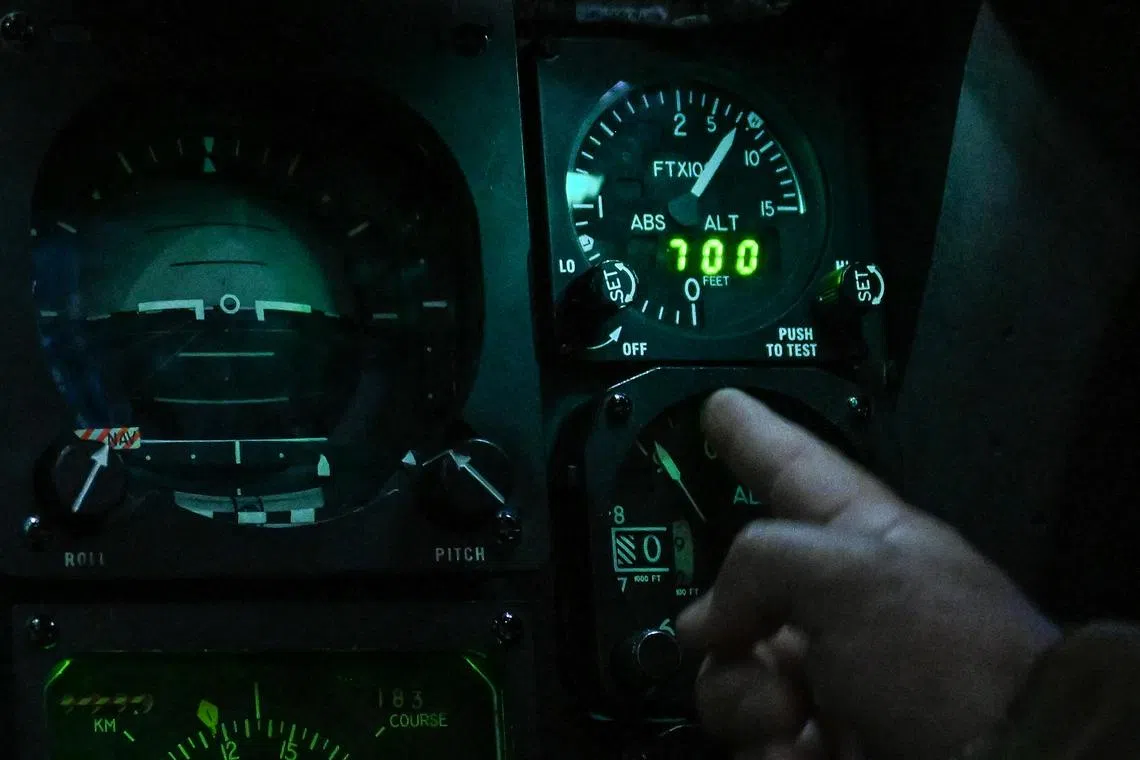US Army helicopter in deadly Washington crash had technical issues
Sign up now: Get ST's newsletters delivered to your inbox

NTSB chairwoman Jennifer Homendy said that there is a possibility that what the crew saw was very different than what the true altitude was.
PHOTO: EPA
Follow topic:
NEW YORK - An investigative hearing into a deadly mid-air collision of a US Army helicopter and a passenger plane
Officials at the hearing also expressed concerns about a “disconnect” between front-line air traffic controllers and agency leaders, and raised other questions about actions before the fatal collision, including why earlier reports of close-call incidents did not prompt safety improvements.
The National Transportation Safety Board (NTSB), the US agency tasked with examining major accidents, held hearings from July 30 to Aug 1, with rigorous questioning of experts and various other parties, including regulators and air traffic controllers.
There were no survivors in the Jan 29 mid-air collision involving the Sikorsky Black Hawk military helicopter and a Bombardier CRJ700 operated by a subsidiary of American Airlines.
The passenger plane from Wichita, Kansas, was coming in to land at Reagan National Airport – just a few miles from the White House – when the Army helicopter on a training flight collided with it.
After examining flight recorder data, the NTSB first reported a discrepancy in the helicopter’s altitude readings on Feb 14.
As part of the investigation, tests were conducted with three of the same helicopter models – Sikorsky Black Hawk Lima – belonging to the same battalion.
The findings revealed this week showed differences between the altitude indicated by the radar altimeter and the barometric altimeter on the aircraft.
Investigator Marie Moler noted that the altimeters “showed an 80- to 130-foot (24- to 40-metre) difference in flight” although the differences were within 20 to 55 feet in a controlled test environment.
“Once the helicopter rotors were turning and producing lift and thrust, the altimeter readings lowered significantly and stayed lower throughout the flights,” Ms Moler said.
NTSB chair Jennifer Homendy called the discrepancy significant, calling for more investigation.
“I am concerned. There is a possibility that what the crew saw was very different than what the true altitude was,” Ms Homendy said.
“A 100-foot difference is significant” in this case, she added.

The instrument cluster, including the radar altimeter, inside the cockpit of a UH-60L Black Hawk flight simulator on April 7.
PHOTO: KENNY HOLSTON/NYTIMES
In the Potomac River area where the collision occurred, helicopters are required to stay below 200 feet, officials said during the hearings.
A Federal Aviation Administration (FAA) official said at the hearing on Aug 1 that it is planning additional helicopter route changes near Ronald Reagan Washington National Airport, after imposing permanent restrictions on non-essential helicopter operations in March and further restricting where they could operate in June.
NTSB members have also raised concerns about the failure of the FAA to turn over documents in a timely fashion during the investigation of the January collision.
The NTSB received details on staffing levels at the time of the Jan 29 crash “after considerable confusion and a series of corrections and updates from the FAA”, a board report said.
One question raised at the hearing was about the failure of the primary controller on duty to issue an alert to the American regional jet and the actions of an assistant controller who was supposed to assist the primary controller.
“That did not occur and we’re trying to understand why. And no one has been able to tell us what the individual was doing during that time,” Ms Homendy said.
She said earlier this week the FAA had ignored warnings about serious safety issues.
“Every sign was there that there was a safety risk, and the tower was telling you,” Ms Homendy said.
“You transferred people out instead of taking ownership over the fact that everybody in FAA in the tower was saying there was a problem... Fix it. Do better.”
FAA officials at the hearing vowed to work more collaboratively and address concerns.
Senator Tim Kaine on Aug 1 also cited concerns raised by an FAA manager about the volume of flights at the airport before the collision and the decision by Congress last year to add five additional daily flights to Reagan.
“Congress must act to reduce dangerous congestion by removing flights into and out of (Reagan National),” Mr Kaine said.
US President Donald Trump had been quick to blame diversity hiring policies for the accident although no evidence has emerged that they were responsible.
FAA air traffic control specialist Clark Allen told the hearing there was sufficient supervisory staff present in the control tower that night.
The collision was the first major plane crash in the United States since 2009 when 49 people were killed near Buffalo, New York. AFP, REUTERS

